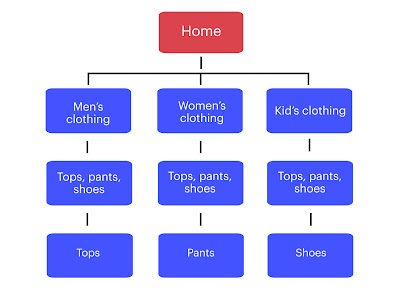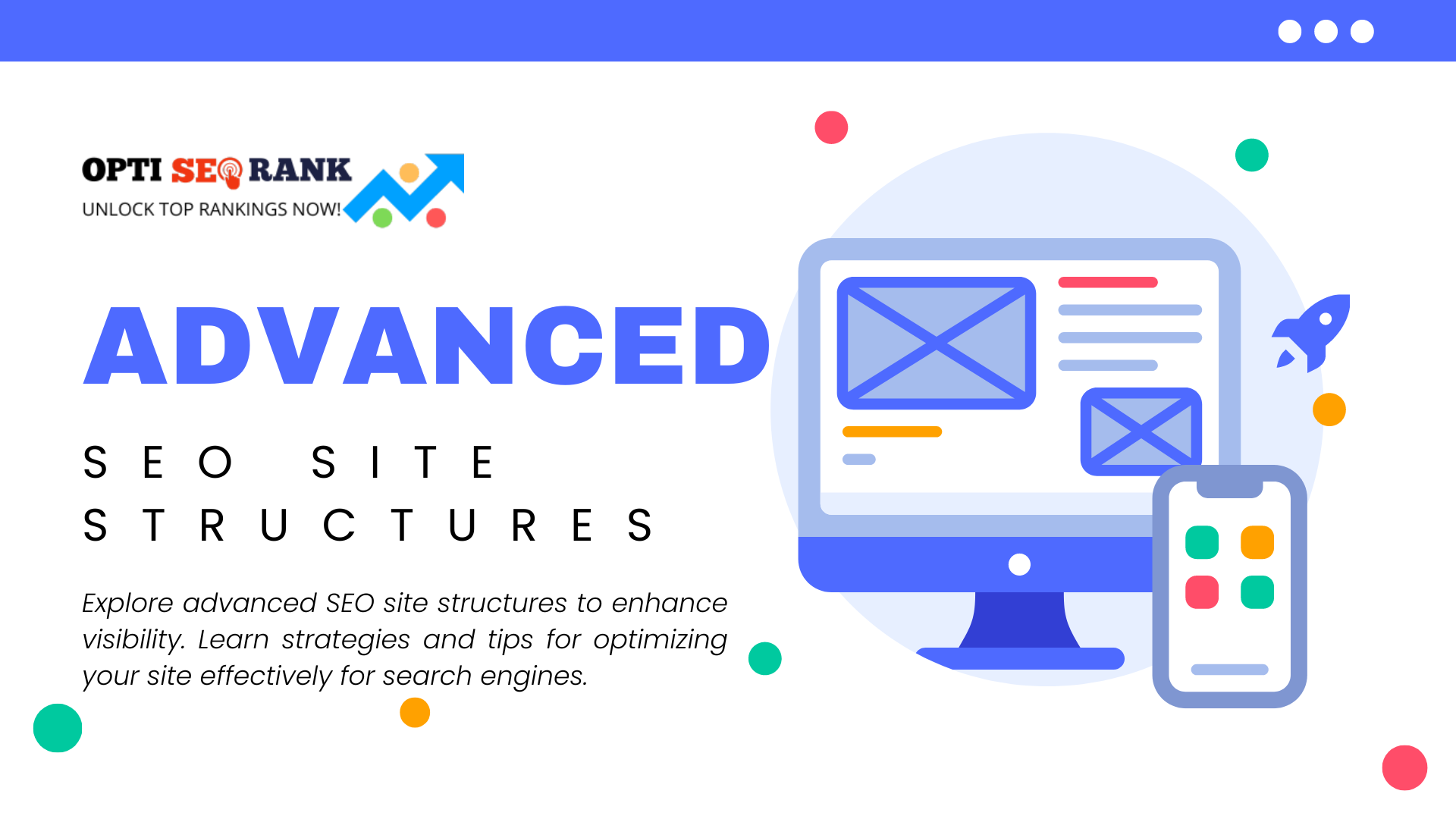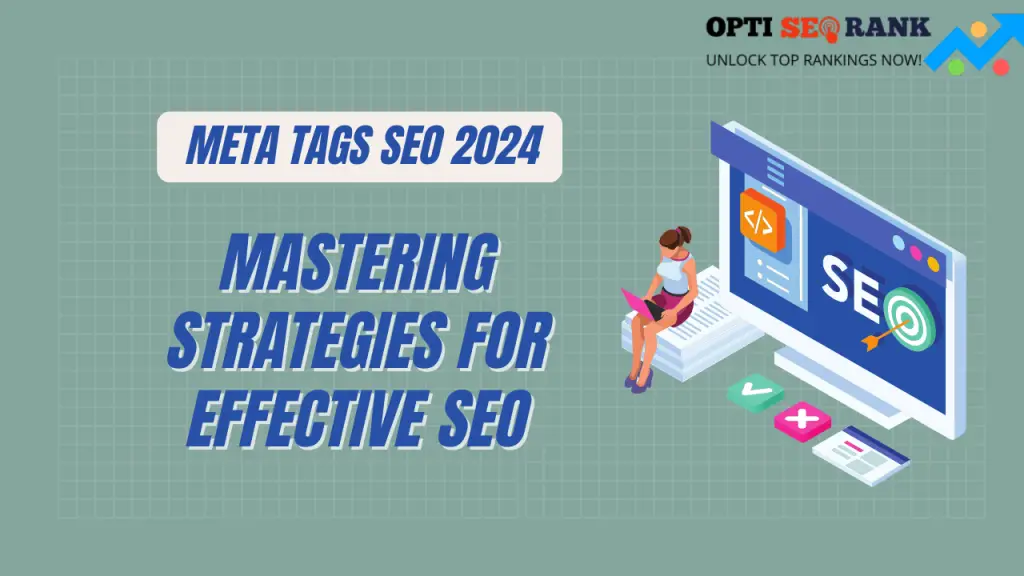Advanced site structures enhance SEO by improving navigation and boosting search engine visibility. They facilitate better user experiences and higher rankings.
Building a robust site structure is vital for SEO success. It helps search engines crawl and index your content more effectively. Clear navigation and well-organized content keep users engaged, reducing bounce rates. Implementing a logical hierarchy with categories and subcategories ensures relevant content is easily accessible.
Use internal linking to connect related pages, enhancing link equity and user experience. A site map aids search engines in understanding your site’s layout. Regularly update and maintain your site structure to adapt to changing SEO algorithms and user needs. This approach not only improves rankings but also drives sustainable organic traffic growth.
Introduction To Seo Structures

Crafting advanced site structures is crucial for achieving SEO supremacy. A well-organized website enhances search engine visibility. It also improves user experience. This section delves into the importance of advanced site structures.
Importance Of Advanced Site Structures
Advanced site structures act as the backbone of your website. They help search engines understand your content better. This understanding boosts your site’s ranking. Here are some key benefits:
- Improved Crawl Efficiency: Search engines can index your pages faster.
- Better Link Equity: Distributes link juice effectively across your site.
- Enhanced User Navigation: Users find what they need quickly.
Seo And User Experience
A good SEO structure improves user experience. Users stay longer on a well-structured site. This decreases bounce rates. Search engines consider this a positive signal. It enhances your SEO rankings.
A well-organized site includes clear menus and logical categories. It also ensures easy navigation. Below is a table summarizing key elements:
| Element | Description |
| Menus | Clear and concise navigation |
| Categories | Logical grouping of content |
| Internal Links | Links within the site to relevant pages |
Utilize a strong site structure for better SEO results. Your users will thank you.
Foundations Of Site Architecture

Crafting a strong site structure is crucial for SEO success. A well-organized site makes it easy for search engines to crawl and index pages. This boosts your visibility and ranking. Let’s explore the basic principles and common pitfalls of site architecture.
Basic Principles
The foundation of a good site structure includes several key elements:
- Hierarchy: Organize your site into categories and subcategories.
- URL Structure: Use clear and descriptive URLs.
- Internal Linking: Connect related pages within your site.
- Navigation: Create an easy-to-use menu for visitors.
A solid hierarchy helps search engines understand your content. Descriptive URLs improve click-through rates. Internal linking boosts page authority. User-friendly navigation enhances the user experience.
Common Pitfalls
Avoid these common mistakes in site architecture:
- Deep Nesting: Don’t bury pages too many levels deep.
- Broken Links: Regularly check for and fix broken links.
- Duplicate Content: Ensure each page has unique content.
- Complex URLs: Keep URLs short and simple.
Deep nesting makes it hard for search engines to reach pages. Broken links hurt user experience and SEO. Duplicate content confuses search engines. Complex URLs can be hard to read and remember.
Optimizing Url Structures
Optimizing URL structures is a crucial aspect of SEO. A well-crafted URL can significantly improve your site’s ranking. It helps search engines understand your content better. Clean and descriptive URLs enhance user experience. They make it easier for users to navigate your site. Let’s dive into the key elements of optimizing URL structures.
Clean And Descriptive Urls
Creating clean and descriptive URLs is essential for good SEO. Here are some tips:
- Use hyphens to separate words.
- Avoid using underscores, spaces, or special characters.
- Keep URLs short and simple.
- Ensure URLs are easy to read.
Example of a clean URL:
https://www.example.com/clean-url-example
Keyword Integration
Integrating keywords into your URLs can boost your rankings. Follow these guidelines:
- Use primary keywords in the URL.
- Avoid keyword stuffing.
- Make sure the keywords are relevant to the content.
Example of a keyword-rich URL:
https://www.example.com/seo-tips-for-beginners
Use these techniques to optimize your URL structures. It will help search engines understand your site. It will also improve user experience. Happy optimizing!
Navigational Hierarchies

Effective navigational hierarchies are key to a well-structured site. They guide users and search engines. This helps in crafting advanced site structures for SEO supremacy. Learn how to use primary and secondary navigation, breadcrumbs, and internal linking.
Primary Vs Secondary Navigation
Primary navigation is the main menu of your website. It should contain the most important pages. This menu is usually at the top of the site.
Secondary navigation includes less important links. These can be in a sidebar or footer. They help users find more detailed content.
| Navigation Type | Placement | Purpose |
| Primary Navigation | Top menu | Main pages |
| Secondary Navigation | Sidebar or footer | Additional links |
Breadcrumbs And Internal Linking
Breadcrumbs are a trail of links. They show the user’s path on the site. This helps users and search engines understand the site’s structure.
Internal linking connects different pages on your site. These links help spread link equity. They also improve user experience.
- Breadcrumbs enhance site navigation
- Internal links improve SEO
- Both aid in creating a logical site structure
Use these elements wisely. They make your site user-friendly. They also boost your SEO efforts.
Content Silos And Clusters
In the digital landscape, building bridges of search is crucial. Crafting advanced site structures can lead to SEO supremacy. One effective method is using Content Silos and Clusters. This approach organizes content into thematic groups, enhancing both user experience and search engine ranking.
Thematic Organization
Content silos and clusters rely on thematic organization. This means grouping related content together. For example, a blog on digital marketing might have silos like SEO, social media, and email marketing. Each silo contains clusters of related articles.
| Silo | Cluster Topics |
| SEO | Keyword Research, On-Page SEO, Backlinks |
| Social Media | Content Strategy, Analytics, Tools |
| Email Marketing | List Building, Campaigns, Metrics |
Such organization helps search engines understand the site better. It also improves user navigation.
Impact On Ranking
The impact on ranking is significant. Search engines prefer well-organized sites. Content silos and clusters offer this advantage. They show a clear structure and relevance.
Here are some benefits:
- Improved crawl efficiency
- Higher keyword relevance
- Better user experience
These factors lead to higher rankings. Users find information quickly. Search engines reward this efficiency.
Mobile-first Design
Mobile-First Design means designing websites for mobile devices first. It ensures that mobile users get the best experience. This approach is crucial for modern SEO strategies. With more users browsing on phones, you need a mobile-friendly site. It helps improve your search rankings significantly.
Responsive Layouts
Responsive Layouts adjust to any screen size. This makes your site usable on phones, tablets, and desktops. Google prioritizes mobile-friendly websites in search results. Use CSS media queries to create a responsive layout. Keep your design simple and intuitive for better mobile experience.
Here’s a basic example of a media query:
@media only screen and (max-width: 600px) { body { background-color: lightblue; } }
Mobile Seo Best Practices
Follow these Mobile SEO Best Practices to optimize your site:
- Fast Loading Speed: Keep page load times under 3 seconds.
- Optimize Images: Use compressed images for faster load times.
- Use AMP: Accelerated Mobile Pages improve speed and performance.
- Mobile-Friendly Content: Use readable fonts and simple navigation.
| Best Practice | Details |
| Fast Loading Speed | Keep page load times under 3 seconds. |
| Optimize Images | Use compressed images for faster load times. |
| Use AMP | Accelerated Mobile Pages improve speed and performance. |
| Mobile-Friendly Content | Use readable fonts and simple navigation. |
Implementing these best practices helps you achieve SEO supremacy. This ensures your site stands out in mobile search results.
Performance And Speed Optimization
Performance and speed optimization are key for SEO supremacy. Fast websites rank higher on search engines. Slow sites lose visitors quickly. This section covers how to enhance site speed effectively.
Fast Loading Times
Fast loading times are crucial. Pages should load in under 3 seconds. Slow loading frustrates users and increases bounce rates. High bounce rates hurt your SEO rankings.
Reducing load times involves several strategies. Optimize images to reduce file sizes. Use next-gen formats like WebP. Minimize JavaScript and CSS files. Enable browser caching to store resources locally. These steps improve user experience and SEO performance.
Tools And Techniques
Various tools and techniques can help improve site speed. Below is a table of useful tools:
| Tool | Function |
| Google PageSpeed Insights | Analyzes and provides suggestions for performance improvements |
| GTmetrix | Offers detailed reports on site speed and provides optimization tips |
| Pingdom | Monitors site performance and offers insights for speed enhancements |
Other techniques involve reducing server response times. Use a reliable hosting provider. Opt for a Content Delivery Network (CDN) to distribute content globally. Compress files to reduce their size. Below is a list of best practices:
- Optimize images and use lazy loading
- Minimize HTTP requests
- Enable Gzip compression
- Use asynchronous loading for CSS and JavaScript
- Reduce the number of plugins
Implementing these tools and techniques boosts site performance. Better performance leads to higher SEO rankings and improved user satisfaction.
Leveraging Structured Data
Structured data is the backbone of advanced site structures. It helps search engines understand your content better. This leads to better rankings and increased visibility. Using structured data, you can create rich snippets that stand out in search results. This attracts more clicks and traffic to your site.
Schema Markup
Schema Markup is a form of structured data. It helps search engines understand your content’s context. By adding schema markup to your website, you provide additional information about your pages. This can include details like:
- Product descriptions
- Event dates
- Recipe ingredients
- Business hours
Search engines use this data to display more informative results. This improves your site’s visibility. Here’s an example of schema markup for a recipe:
{
“@context”: “https://schema.org/”,
“@type”: “Recipe”,
“name”: “Chocolate Chip Cookies”,
“author”: {
“@type”: “Person”,
“name”: “John Doe”
},
“datePublished”: “2023-10-01”,
“description”: “The best chocolate chip cookies you’ll ever taste.”,
“recipeIngredient”: [
“2 cups flour”,
“1 cup sugar”,
“1 cup chocolate chips”
],
“recipeInstructions”: [
“Preheat oven to 350 degrees F.”,
“Mix ingredients in a bowl.”,
“Bake for 15 minutes.”
]
}
Rich Snippets And Seo
Rich Snippets are enhanced search results. They use structured data to display extra information. This can include:
- Star ratings
- Prices
- Images
- Author names
Rich snippets make your content more appealing. This increases your click-through rate (CTR). Higher CTR leads to better search engine rankings. Here’s a table showing the benefits of rich snippets:
| Benefit | Description |
| Increased CTR | More clicks from search results. |
| Higher Visibility | Stand out in search listings. |
| Better Rankings | Improved SEO performance. |
Using rich snippets, your site gains a competitive edge. It becomes more attractive to users and search engines alike.
Monitoring And Adjusting Strategies
Monitoring and adjusting strategies are crucial for effective SEO. With proper monitoring, you can identify and resolve issues. Adjusting strategies ensures you remain competitive in search rankings. This section explores key aspects of maintaining and refining your SEO approach.
Analytics And Tools
Using the right analytics and tools helps track your site’s performance. Google Analytics provides detailed insights into user behavior. You can measure bounce rates, session durations, and conversion rates.
Another essential tool is Google Search Console. It identifies indexing issues and search performance. You can see which keywords drive traffic and how your site appears in search results.
Consider using third-party tools like SEMrush or Ahrefs. These tools offer comprehensive SEO analysis and competitor insights. They help in identifying backlink opportunities and keyword gaps.
Here’s a comparison of some popular SEO tools:
| Tool | Features | Price |
| Google Analytics | Traffic Analysis, User Behavior | Free |
| Google Search Console | Indexing Issues, Search Performance | Free |
| SEMrush | SEO Analysis, Competitor Insights | Paid |
| Ahrefs | Backlink Analysis, Keyword Research | Paid |
Ongoing Optimization
Ongoing optimization is a continuous process. Regularly update your content to keep it relevant. Ensure your site is mobile-friendly. Mobile optimization is critical for user experience and rankings.
Perform regular technical SEO audits. Check for broken links, duplicate content, and slow loading times. Use tools like Screaming Frog or Sitebulb for comprehensive audits.
Here are some ongoing optimization tasks:
- Update old content with new information.
- Optimize images and videos for faster loading.
- Improve site navigation and user experience.
- Ensure all pages are mobile-friendly.
- Monitor and fix broken links.
Engage in regular keyword research. Trends change, and so do user queries. Use tools like Google Trends and Keyword Planner. These tools help you stay ahead of the curve.
By focusing on ongoing optimization, you ensure your site remains competitive. Regular updates and audits are key to SEO success.
Future Trends In Site Structure
In the ever-evolving landscape of SEO, building advanced site structures is key. Understanding future trends can set your site apart. Below, we explore two significant trends: Voice Search Optimization and AI and Machine Learning.
Voice Search Optimization
Voice search is changing how users find information. It’s faster and more convenient than typing. Optimizing your site for voice search is essential.
- Use natural language in your content.
- Answer common questions directly.
- Focus on long-tail keywords.
People use voice search differently than text search. They ask full questions, not just keywords. Make sure your content mimics this natural speech pattern.
Ai And Machine Learning
AI and machine learning are shaping the future of SEO. These technologies analyze user behavior and adapt accordingly.
| Feature | Impact |
| Personalization | Tailors content to user preferences. |
| Automation | Streamlines SEO tasks. |
| Data Analysis | Provides deeper insights. |
AI can personalize user experiences. This keeps visitors engaged. Machine learning automates repetitive SEO tasks, saving time and effort.
Embrace these trends to stay ahead. Adapt your site structure for future success.
Frequently Asked Questions
How Do I Create A Seo-friendly Site Structure?
Create a clear hierarchy with categories and subcategories. Use descriptive, keyword-rich URLs. Implement internal linking. Ensure mobile-friendliness. Optimize loading speed.
What Is The Best Structure For Seo?
The best SEO structure includes a clear hierarchy, keyword-rich titles, meta descriptions, internal linking, and mobile-friendly design. Use clean URLs and optimize images.
How Do I Create A Website Structure That Enhances Seo?
To enhance SEO, organize your website with a clear hierarchy. Use descriptive, keyword-rich URLs. Create a sitemap for easy navigation. Optimize internal linking. Ensure mobile-friendliness and fast loading times.
What Is The Site Structure In Seo?
Site structure in SEO refers to how pages are organized and linked on a website. It improves user experience and search engine crawling.
Conclusion
Crafting advanced site structures is key for SEO supremacy. Prioritize user experience and search engine algorithms. Remember, organized content boosts rankings. Implement these strategies to stay ahead in the digital landscape. Building bridges of search ensures long-term success. Keep refining your site structure for optimal SEO performance.



